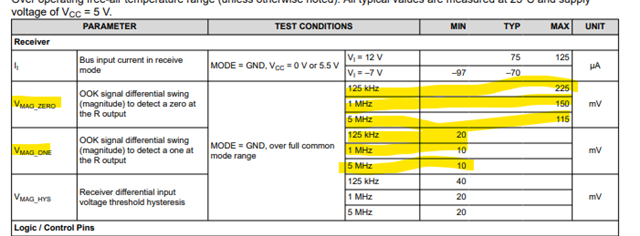With the THVD8000 transceiver, what should be the observed behavior for bus contention? Are the observations deterministic for all combinations of dominant and recessive bit collisions?
-
Ask a related question
What is a related question?A related question is a question created from another question. When the related question is created, it will be automatically linked to the original question.


